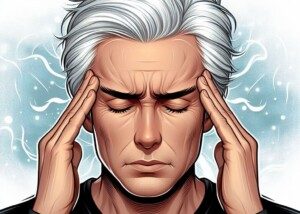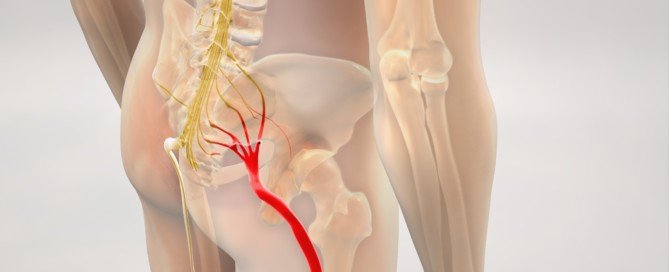Causes of PVC’s after Lying Down at Bedtime

Can lying down to go to sleep actually cause premature ventricular contractions?
“Most people are more aware of their heartbeat after they lie down at night, thus triggering the perception, but not the reality, of an arrhythmia,” explains cardiologist Dr. Pam Marcovitz, MD, an internal medicine cardiologist with Frankel Cardiovascular Center in MI.
This phenomenon applies to both men and women. The act of lying down at bedtime — a situation of changing body position from upright — would not disturb the heart and brain’s cardiac rhythm headquarters.
However, something needs to be said about the possibility that the moment some men and women take to their bed, their mind gets flooded with stressful thoughts.
You’re lying there in the dark and quiet, perhaps alone: the perfect opportunity for all sorts of intrusions to barge into your head, such as next-day’s tasks or an unforgivable act committed by a family member.
It can be overwhelming, reflecting upon the anticipated next-day’s struggles or someone’s outrageous behavior.
What’s going on in your life?
The phone calls you must make next day?
The people you must speak to?
The tasks you didn’t get done today that will carry over to next day?
The bills you still didn’t pay?
Anxiety mounts as you lie there in bed, and anxiety can trigger premature ventricular contractions.
In fact, your BED can be a conditioned stimulus for anxiety (because that’s where you do most of your fretful ruminating) and hence — all those PVC’s.
What Should You Do?
- Try to retrain your mind to empty all of the stressful thoughts when your head hits the pillow.
- Put on a white noise machine to help distract you from anxiety-triggering thoughts.
- Limit or eliminate caffeine intake (a trigger for premature ventricular contractions) in the few hours prior to bedtime.

Dr. Marcovitz has 40+ years of experience in helping people improve their heart health.
 Lorra Garrick has been covering medical, fitness and cybersecurity topics for many years, having written thousands of articles for print magazines and websites, including as a ghostwriter. She’s also a former ACE-certified personal trainer.
Lorra Garrick has been covering medical, fitness and cybersecurity topics for many years, having written thousands of articles for print magazines and websites, including as a ghostwriter. She’s also a former ACE-certified personal trainer.
.
Top image: ©Lorra Garrick
TIA Headache vs. Migraine: Telling the Difference

Does a TIA headache have any features that distinguish it from migraine head pain, or vice versa?
Suppose you’re diagnosed with migraine headaches. And suppose as time goes on, you’re aware that your risk of stroke or transient ischemic attack is increasing (e.g., you’re getting older and not in the best of physical condition).
At some point you may then fear a TIA every time you have a migraine headache. Is there a way to manage this anxiety?
“Very good question,” begins Rob Lapporte, MD, who is board certified in emergency medicine.
Dr. Lapporte explains, “Some migraines can present with symptoms that are very similar, if not identical to a TIA or a stroke.
“I would say that if you commonly get migraines and the pattern changes, I would seek medical attention immediately.
“For instance, if your migraine normally consists of an aura of visual disturbances and photophobia (discomfort from light) and is followed by pain, but you suddenly develop aphasia (inability to speak or slurred speech), I would get medical attention immediately.
“If your migraine always mimics a TIA, I would talk to your doctor about getting regular screening exams, such as Doppler studies of the carotid arteries and EKGs.”
Get to Know Your Migraines
Keep a journal of your migraine headache experiences.
Jot down their characteristics to identify the pattern, so that if one day you have an episode that seems different than past ones, you can refer to your notes and see if, indeed, it truly is different.
Also realize that a TIA can cause only a headache as a symptom. Carotid artery disease can cause a TIA:
A particle of plaque buildup in a carotid artery breaks loose and travels to the brain, lodging in a small blood vessel and temporarily (transiently) cutting off blood flow to the part of the brain that the blood vessel feeds into — causing the TIA.
 Dr. Lapporte has been practicing evidence-based clinical medicine in emergency rooms and urgent care centers for 25+ years. His experience includes that of medical director for Legacy ER and Urgent Care.
Dr. Lapporte has been practicing evidence-based clinical medicine in emergency rooms and urgent care centers for 25+ years. His experience includes that of medical director for Legacy ER and Urgent Care.
 Lorra Garrick has been covering medical, fitness and cybersecurity topics for many years, having written thousands of articles for print magazines and websites, including as a ghostwriter. She’s also a former ACE-certified personal trainer.
Lorra Garrick has been covering medical, fitness and cybersecurity topics for many years, having written thousands of articles for print magazines and websites, including as a ghostwriter. She’s also a former ACE-certified personal trainer.
.
Top image: ©Lorra Garrick
TIA Headache vs. Ice Pick Headache: What’s the Difference?

A TIA (transient ischemic attack) can cause a really bad—and very brief—headache. And this also describes the so-called ice pick headache.
But if you keep getting stabbing, sharp pains in your head (lasting up to 30 seconds), but no other symptoms (one-sided numbness, weakness or paralysis, confusion, visual disturbance, slurred speech), the odds of all of these events being a TIA are extremely tiny.
“TIA’s usually, but not always, present with a neurologic complaint such as weakness, facial droop or slurred speech,” explains Rob Lapporte, MD, who is board certified in emergency medicine.
“Ice pick headaches occur commonly in people who also suffer from migraines and present with severe, sharp, stabbing pains in one specific portion of the head.”
However, you need not be a migraine sufferer to have an ice pick headache or sudden sharp pain in the head that lasts only seconds.
Dr. Lapporte points out that the ice pick headache lasts five to 30 seconds on average, “and are usually treated with nonsteroidal anti-inflammatories like indomethacin.”
Some ice pick sufferers have these episodes several times a day. On the other hand, some people have one or two every few months. For some sufferers, the thought of a brain tumor immediately occurs.
There is no pattern for this type of pain, and usually no trigger.
A pinched nerve in the neck can cause sharp pain that radiates to the head, and so can muscles and nerves in the neck region that have been pummeled with a strenuous weightlifting workout.
But usually, pain from a pinched nerve or nerves that are buzzed from intense weightlifting isn’t as pronounced as that of a true ice pick headache.
The key feature of the ice pick episode is that it lasts only seconds. And as mentioned, there are no other symptoms with these episodes.
 Dr. Lapporte has been practicing evidence-based clinical medicine in emergency rooms and urgent care centers for 25+ years. His experience includes that of medical director for Legacy ER and Urgent Care.
Dr. Lapporte has been practicing evidence-based clinical medicine in emergency rooms and urgent care centers for 25+ years. His experience includes that of medical director for Legacy ER and Urgent Care.
 Lorra Garrick has been covering medical, fitness and cybersecurity topics for many years, having written thousands of articles for print magazines and websites, including as a ghostwriter. She’s also a former ACE-certified personal trainer.
Lorra Garrick has been covering medical, fitness and cybersecurity topics for many years, having written thousands of articles for print magazines and websites, including as a ghostwriter. She’s also a former ACE-certified personal trainer.
.
Top image: Shutterstock/JL-Pfeifer
Does an Untreated TIA Mean You Should Avoid Driving?

If you had an untreated transient ischemic attack, should you avoid driving, and if so, for how long?
I wondered about this, because I’ve witnessed what strongly appeared to be two TIAs of my elderly father — who denied this and thus, never sought medical evaluation and continued driving as always.
But that aside, it’s a fair question: What does it mean when a person who never received treatment for a TIA continues to drive?
“It’s usually recommended that a patient wait at least one month before getting back on the road after suffering from a TIA,” says Rob Lapporte, MD, who is board certified in emergency medicine.
A transient ischemic attack is a medical emergency.
Many people don’t realize this, believing that an emergency requires gushing blood or some other visually dramatic situation such as a misshapen leg from a broken bone.
However, a TIA is a harbinger of a stroke—and a stroke can be fatal. Stroke is the leading cause of disability in the U.S. and strikes about 800,000 Americans every year (cdc.gov/stroke/).
A TIA means that something is wrong in the person’s body, and it would be enormously erroneous to assume that a TIA is a one-time event, that it will never happen again. The second occurrence could be while the person is driving!
Dr. Lapporte continues, “That being said, anyone with a TIA or TIA symptoms (even if not officially diagnosed) should be cleared by his/her doctor before resuming activities like driving or operating heavy machinery.”
Symptoms Never to Ignore
Symptoms to be concerned about that warrant a prompt medical evaluation (ideally at an ER) are as follows:
- one-sided weakness, clumsiness, paralysis, tremoring and/or numbness, including in the face
- slurred speech
- confusion or unresponsiveness despite apparent consciousness
- blurry vision or what seems like a curtain coming over an eye
- dizziness
- really bad headache.
Headache and dizziness are particularly alarming if accompanied by any of the other said symptoms.
In a TIA (or stroke), these symptoms will have a sudden onset. By definition of a transient ischemic attack, they will last for minutes, possibly seconds, though sometimes a TIA will last for a few hours.
However, when it’s only minutes and especially less than one minute, a patient is more likely to brush it off as benign, stress-related or a side effect of medication, or even something related to getting old.
Suddenly feeling as though your body is being pulled to one side while you’re walking can also mean a TIA, as is a sudden feeling of heaviness on one side of your body.
If any of these symptoms happen to you just once, there’s no reason to think they won’t happen again. Imagine what would happen if these symptoms, even just one of them, struck you while you were driving.
A prompt medical evaluation can lead to treatment that will greatly reduce the recurrence of a TIA, and hence, give your family members peace of mind when you drive!
 Dr. Lapporte has been practicing evidence-based clinical medicine in emergency rooms and urgent care centers for 25+ years. His experience includes that of medical director for Legacy ER and Urgent Care.
Dr. Lapporte has been practicing evidence-based clinical medicine in emergency rooms and urgent care centers for 25+ years. His experience includes that of medical director for Legacy ER and Urgent Care.
 Lorra Garrick has been covering medical, fitness and cybersecurity topics for many years, having written thousands of articles for print magazines and websites, including as a ghostwriter. She’s also a former ACE-certified personal trainer.
Lorra Garrick has been covering medical, fitness and cybersecurity topics for many years, having written thousands of articles for print magazines and websites, including as a ghostwriter. She’s also a former ACE-certified personal trainer.
.
Top image: ©Lorra Garrick
How Well Can Coumadin Prevent Transient Ischemic Attacks?

Coumadin is a potent blood thinner, so how effective is it at preventing a transient ischemic attack, also known as a TIA?
“The only time that I would recommend Coumadin for TIA or stroke prevention would be if the patient has atrial fibrillation, which is a cardiac rhythm abnormality,” says Rob Lapporte, MD, who is board certified in emergency medicine.
Dr. Lapporte continues, “Studies show that in most other instances, the risks of hemorrhage while on Coumadin outweigh the benefits. Antiplatelet drugs like aspirin, Plavix and Aggrenox are better choices.”
But risks aside, from the standpoint of preventing a TIA, just how effective is Coumadin (also known as warfarin)?
The verdict isn’t clear-cut on this. Some studies show that Coumadin is more effective than aspirin at preventing a stroke, and other studies indicate that aspirin is the winner here.
Bottom line, nobody really knows the answer to this question.
The standard of medical practice is that in elderly people with atrial fibrillation, they are often (not always) prescribed Coumadin.
In these patients, the benefits of this blood thinner outweigh the risks (internal bleeding).
That’s because when old age is combined with atrial fibrillation, the risk of stroke or its forerunner, TIA, is greatly amplified.
Transient Ischemic Attack Symptoms
- Vision problems
- Slurred speech
- One-sided facial or limb paralysis or weakness
- Confusion, cognitive change
- Clumsiness
- These symptoms are all sudden-onset
A-fib can cause pooling of blood in the heart, leading to clots that then travel by way of carotid arteries into the brain, where they can lodge in a blood vessel and shut off oxygen to the part of the brain that the vessel supplies: anything from a 10-second TIA to a massive stroke.
Coumadin thins the blood and hence reduces its ability to form clots.
 Dr. Lapporte has been practicing evidence-based clinical medicine in emergency rooms and urgent care centers for 25+ years. His experience includes that of medical director for Legacy ER and Urgent Care.
Dr. Lapporte has been practicing evidence-based clinical medicine in emergency rooms and urgent care centers for 25+ years. His experience includes that of medical director for Legacy ER and Urgent Care.
 Lorra Garrick has been covering medical, fitness and cybersecurity topics for many years, having written thousands of articles for print magazines and websites, including as a ghostwriter. She’s also a former ACE-certified personal trainer.
Lorra Garrick has been covering medical, fitness and cybersecurity topics for many years, having written thousands of articles for print magazines and websites, including as a ghostwriter. She’s also a former ACE-certified personal trainer.
.
Top image: Shutterstock/Monkey Business Images
Can an MRI Show a Transient Ischemic Attack?

Just how effective is an MRI at detecting a transient ischemic attack or TIA?
Well, when compared to a CT scan, an MRI “is more sensitive when evaluating someone for a TIA or stroke,” says Rob Lapporte, MD, who is board certified in emergency medicine.
But neither the MRI nor CT scan can show that a transient ischemic attack occurred, continues Dr. Lapporte.
However, an MRI “can be helpful in a TIA workup in two ways,” he says.
“One, if the MRI shows evidence of an infarct [tissue death from blocked blood supply] or hemorrhage, then it rules out a TIA. This patient would now be diagnosed with a stroke.
“Two, if the MRI does not show any evidence of acute infarct or hemorrhage and the symptoms are consistent with a TIA, the diagnosis can be made.”
A transient ischemic attack, due to its temporary nature, will not result in tissue death.
The clot that transiently blocks blood supply dissolves before an infarct can happen.
A hemorrhage results from a hemorrhagic type of stroke, and a TIA is not related to this kind of stroke.
A TIA is sometimes called a mini-stroke, and it is the transient or temporary version of an ischemic stroke. Ischemia refers to insufficient supply of blood.
Though an MRI is more sensitive than a CT scan at revealing signs that a TIA probably occurred (due to ruling out signs of a stroke or brain bleed, in combination with evaluating symptom descriptors from the patient), Dr. Lapporte points out that the MRI “is more time consuming and labor intensive.”
Conclusion
“There is no test for TIA,” states a report in Practical Neurology (2014 Feb; 14(1): 23–31).
The report adds that “the gold standard remains assessment as soon as possible by a clinical expert.”
 Dr. Lapporte has been practicing evidence-based clinical medicine in emergency rooms and urgent care centers for 25+ years. His experience includes that of medical director for Legacy ER and Urgent Care.
Dr. Lapporte has been practicing evidence-based clinical medicine in emergency rooms and urgent care centers for 25+ years. His experience includes that of medical director for Legacy ER and Urgent Care.
 Lorra Garrick has been covering medical, fitness and cybersecurity topics for many years, having written thousands of articles for print magazines and websites, including as a ghostwriter. She’s also a former ACE-certified personal trainer.
Lorra Garrick has been covering medical, fitness and cybersecurity topics for many years, having written thousands of articles for print magazines and websites, including as a ghostwriter. She’s also a former ACE-certified personal trainer.
‘
Top image: Shutterstock/Duet PandG
Source: ncbi.nlm.nih.gov/pmc/articles/PMC3913122/
Can a CT Scan Detect a Recent Transient Ischemic Attack?

Is it possible for a CT scan to show a recent TIA (transient ischemic attack)?
Wouldn’t it be great if a TIA could leave “footprints” that can be seen on a CT scan?
This way, a doctor can point to the “footprints” and tell the patient with conviction, “Yes, you had a transient ischemic attack,” or, “You did NOT have a TIA.”
The answer to whether a CT scan can detect a recent TIA is “Yes and no,” says Rob Lapporte, MD, who is board certified in emergency medicine.
“A CT scan is useful in the workup for TIA in two ways,” explains Dr. Lapporte.
First if all is “if the CT scan shows evidence of an infarct or hemorrhage, then it rules out a TIA.”
An infarct refers to a localized area of tissue that has died from lack of blood (oxygen).
So in scenario #1, the patient is then diagnosed with a stroke. In the second way that a CT scan can help in diagnosing a TIA, the scan does not show evidence of an acute infarct or hemorrhage, continues Dr. Lapporte.
In addition to that, the symptoms of the patient “are consistent with a TIA,” and the diagnosis of transient ischemic attack is made.
Dr. Lapporte adds, “If you’re asking if you can ‘see’ a TIA on a CT scan, the answer is no. It’s a clinical diagnosis.”
Summary
“There is no test for TIA,” states a study appearing in Practical Neurology (2014 Feb; 14(1): 23–31).
The paper adds that “the gold standard remains assessment as soon as possible by a clinical expert.”
 Dr. Lapporte has been practicing evidence-based clinical medicine in emergency rooms and urgent care centers for 25+ years. His experience includes that of medical director for Legacy ER and Urgent Care.
Dr. Lapporte has been practicing evidence-based clinical medicine in emergency rooms and urgent care centers for 25+ years. His experience includes that of medical director for Legacy ER and Urgent Care.
 Lorra Garrick has been covering medical, fitness and cybersecurity topics for many years, having written thousands of articles for print magazines and websites, including as a ghostwriter. She’s also a former ACE-certified personal trainer.
Lorra Garrick has been covering medical, fitness and cybersecurity topics for many years, having written thousands of articles for print magazines and websites, including as a ghostwriter. She’s also a former ACE-certified personal trainer.
.
Top image: Freepik
Source: ncbi.nlm.nih.gov/pmc/articles/PMC3913122/
Can a TIA Cause Disorientation or Loss of Consciousness?

Can sudden-onset unawareness be caused by a transient ischemic attack?
A sudden experience of mental fog or what seems like unawareness to an observer can be quite unsettling — especially to anyone who knows what a transient ischemic attack is.
“Yes, a TIA can cause disorientation, amnesia or even loss of consciousness,” says Rob Lapporte, MD, who is board certified in emergency medicine.
This means that a person can drop to the floor as a result of a TIA, sustaining injury from the fall.
Transient ischemic attacks are associated with the following symptoms, all sudden-onset: weakness or a heavy feeling on one side of the body or in a limb; numbness or paralysis in a limb; facial drooping; slurred or nonsensical speech; dizziness; blurry vision and mental confusion.
Dr. Lapporte explains, “Think of it this way…The brain has many functions and every part of the brain requires blood flow to stay functional. If any portion of the brain is deprived of blood (therefore, oxygen), it will cease to function properly.
“While this [loss of consciousness, disorientation or unawareness] may not be the most common presentation of a patient with a TIA, it’s certainly possible.”
How possible is unawareness or loss of consciousness from a TIA?
“Loss of consciousness is extremely rare in TIAs (but not impossible),” states a report in Practical Neurology (2014 Feb; 14(1): 23–31).
Much more likely than not, a seemingly sudden loss of consciousness is caused by something other than a TIA, such as a rapid and big drop in blood pressure, or an abnormal heart rhythm.
When a TIA actually does cause a loss of consciousness (and this is very rare), it’s when the blood clot is located in the brainstem or thalamus.
 Dr. Lapporte has been practicing evidence-based clinical medicine in emergency rooms and urgent care centers for 25+ years. His experience includes that of medical director for Legacy ER and Urgent Care.
Dr. Lapporte has been practicing evidence-based clinical medicine in emergency rooms and urgent care centers for 25+ years. His experience includes that of medical director for Legacy ER and Urgent Care.
 Lorra Garrick has been covering medical, fitness and cybersecurity topics for many years, having written thousands of articles for print magazines and websites, including as a ghostwriter. She’s also a former ACE-certified personal trainer.
Lorra Garrick has been covering medical, fitness and cybersecurity topics for many years, having written thousands of articles for print magazines and websites, including as a ghostwriter. She’s also a former ACE-certified personal trainer.
.
Top image: Shutterstock/forma82
Source ncbi.nlm.nih.gov/pmc/articles/PMC3913122/
Can a Headache Be a TIA’s ONLY Symptom?

Is it possible that a headache can be the only symptom of a transient ischemic attack (TIA, mini-stroke)?
Let’s say the headache even lasts just a few minutes.
What are the odds that this could have been a TIA (transient ischemic attack), especially if you have risk factors for one of these mini-strokes?
Headaches and TIAs
“Approximately 25% of all TIAs present with headache as a prominent complaint, and yes, it can be the only symptom of a TIA,” begins Rob Lapporte, MD, who is board certified in emergency medicine.
“However, this is rare. Usually there is a speech deficit or a motor deficit, such as weakness or facial droop.”
So for instance, a sudden-onset headache that comes at the same time as double vision, in a person who has risks for a transient ischemic attack, are very worrisome symptoms.
This individual should go to the ER as soon as possible, even if the headache and visual disturbance last for only 10 seconds!
Very short duration of TIA symptoms is NOT related to the seriousness of the underlying cause.
So whether that headache, coupled with some other neurological symptom such as one-sided heaviness, lasts only 10 seconds or 30 minutes, the urgency to get to an ER is the same.
A sudden headache that’s full force, like a thunderclap, is a warning to get to the ER as soon as possible—and by ambulance.
This is far more likely to be the immediately life-threatening burst blood vessel in the brain (ruptured aneurysm or hemorrhagic stroke), than a transient ischemic attack or ischemic stroke.
Risk factors and ways to reduce the possibility of having a TIA are the same as that for a stroke, such as controlling blood pressure, structured exercise and not smoking.
And remember, headaches can have many causes.
 Dr. Lapporte has been practicing evidence-based clinical medicine in emergency rooms and urgent care centers for 25+ years. His experience includes that of medical director for Legacy ER and Urgent Care.
Dr. Lapporte has been practicing evidence-based clinical medicine in emergency rooms and urgent care centers for 25+ years. His experience includes that of medical director for Legacy ER and Urgent Care.
 Lorra Garrick has been covering medical, fitness and cybersecurity topics for many years, having written thousands of articles for print magazines and websites, including as a ghostwriter. She’s also a former ACE-certified personal trainer.
Lorra Garrick has been covering medical, fitness and cybersecurity topics for many years, having written thousands of articles for print magazines and websites, including as a ghostwriter. She’s also a former ACE-certified personal trainer.
.
Top image: Shutterstock/Ruslan Huzau
Can Strength Training Prevent Sciatica?

If you’re worried about developing the painful condition of sciatica, and you haven’t been strength training — it’s time to hit the gym and lift those weights.
It’s yet one more benefit to weight workouts: lowering the risk of ever ending up with a nerve problem.
“Some ways to prevent sciatic pain definitely includes strength training of core muscles to help increase stability,” explains Dr. Jeff Langmaid, DC, founder/owner of The Evidence Based Chiropractor, LLC, in Tampa, FLA, a research-based marketing and practice growth company that serves thousands of chiropractors across the globe.
Dr. Langmaid continues, “It’s also important to incorporate flexibility exercises into your routine.
“Strengthening your core muscles can help support your lumbar spine. Core stability and support can decrease the likelihood of an episode of sciatic pain.
“Strength training and core muscles are extremely important, but don’t forget also to temper that with flexibility.
“Our body functions at its optimal potential when we are able to have proper strength and flexibility.”
Strength Training Recommendations for Sciatica Pain Prevention
“Regarding weightlifting and sciatic pain, I recommend a focus more on repetition rather than excessive load,” says Dr. Langmaid.
This means 25 reps with a medium-weight kettlebell, for example, instead of eight reps with a super heavy giant kettlebell.
“You don’t want to perform max load exercise – rather, perform strength training exercises with light weights and more repetitions.”
Another example is a 15 rep deadlift routine. Fifteen reps would be done with a medium or light load of weight.
As with the kettlebell swing, proper form is very important with the deadlift.

Shutterstock/Maridav
Dr. Langmaid continues, “Increasing repetition of strength training exercises goes hand-in-hand with core stability.
“This can help prevent sciatic pain. Strength training with maximum load can increase the likelihood of sciatic injury.”
Among the best strength training exercises for preventing sciatica pain are the following: deadlift, bent-over dumbbell row, seated row, kettlebell swing, corner row, pushup, pushup-row and squat.

Freepik.com/fxquadro
Though these are classic weight training moves, every one of them strengthens the core. Your sciatic nerve will thank you!
 Jeff Langmaid, DC
Jeff Langmaid, DC
 Lorra Garrick has been covering medical, fitness and cybersecurity topics for many years, having written thousands of articles for print magazines and websites, including as a ghostwriter. She’s also a former ACE-certified personal trainer.
Lorra Garrick has been covering medical, fitness and cybersecurity topics for many years, having written thousands of articles for print magazines and websites, including as a ghostwriter. She’s also a former ACE-certified personal trainer.
.










































